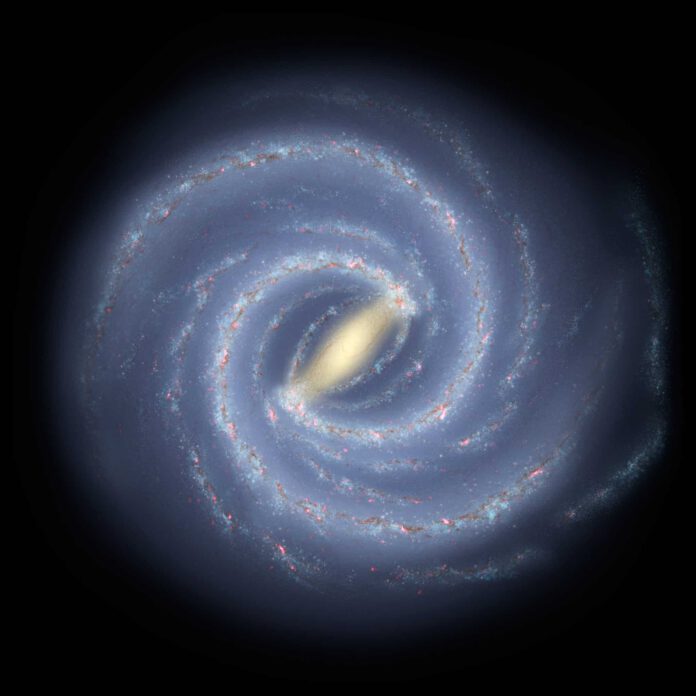
Astonishing Findings through James Webb Telescope
Once again, James Webb has dazzled the scientific community. Astronomers, using this space telescope, have managed to peer more than 10 billion years back in time. There, they discovered evidence of ‘star bars’ in early galaxies. This suggests that these galaxies were much less chaotic in structure and evolved faster than previously believed.
Understanding ‘Star Bars’
These so-called ‘star bars’ are observable as elongated luminous bands within a galaxy. These bands are populated with stars and are found in disk or spiral galaxies, like our own Milky Way. During their development, these star bars influence the star formation process within a galaxy, causing gases, for instance, to be drawn towards the central region of the galaxy.
Implications of ‘Star Bars’
The existence of these ‘star bars’ gives scientists confidence that galaxies have transitioned into a more stable, mature phase. It’s exceptional to find evidence of bar formation dating back to a time when the universe was only a few billion years old.
Webb Trumps Hubble
Previous studies conducted using the Hubble space telescope managed to detect bar-forming galaxies dating back to about 8 to 9 billion years ago. However, the heightened sensitivity and improved wavelength range of the Webb telescope allow researchers to delve deeper into history to study this phenomenon. The evolution of early bar spiral galaxies is taking place right before our eyes, billions of light-years away. Consequently, scientists must revise their theories on galaxy evolution and universe formation substantially.
A Major Surprise
“Galaxies in the early universe mature much more quickly than we thought”, says head researcher Zoe Le Conte, an astronomer at Durham University in the UK. “This is a significant surprise, as one would expect the universe at that stage to be very turbulent with numerous galaxy collisions and much gas not yet formed into stars. Thanks to the James Webb space telescope, we now see many of these bars emerging much earlier in the universe’s existence. This implies that galaxies entered a quieter stage of their evolution earlier than we thought and we will need to reassess our view of the early evolution of galaxies.”
The researchers used the Webb telescope to search for bar formations in the galaxies 8 to 11.5 billion years ago. The universe itself is 13.7 billion years old. Of the 368 observed disk galaxies, the researchers found that nearly one in five had bars—twice as many as observed by Hubble.
Back to the Drawing Board
“We discovered that there were many more ‘star bars’ present in the early universe than Hubble studies previously indicated. From this, we can conclude that the evolution of galaxies due to these star bars has been taking place for much longer than believed,” says researcher Dimitri Gadotti of Durham University. “The fact that there are many more star bars than expected is very intriguing. The mathematical models we have established about the universe will need to be accurately examined to see if we achieve the same results as the observations we’ve made using James Webb. We thought we had a solid grasp on it, but now we need to go back to the drawing board.”
Pushing the Limits of Observation
The further back in time the researchers looked, the fewer bar-forming galaxies they were able to observe. The team believes that this is due to galaxies in even earlier stages of the universe most likely being less well-formed. There is currently no way to detect shorter star bars, which are even more challenging to spot, even with the immense power of the JWST.
The researchers aim to study even more galaxies in the early universe in the near future, curious to see if they also contain star bars. Eventually, they hope to look back as far as 12.2 billion years to observe the growth of ‘star bars’ over time and gain a deeper understanding of their development mechanisms.
Understanding Barred Spiral Galaxies
A barred spiral galaxy is a galaxy that, like spiral galaxies, has spiral arms. But these do not originate from the center, they originate from a ‘bar’ that crosses the center. Edwin Hubble differentiated them as type SBa, SBb, and SBc. Subsequently, the SBm type was added for galaxies previously categorized as irregular. For instance, the Magellanic clouds fall under the SBm type and they also contain barred spiral structures. The Milky Way is probably also a barred spiral: a disk galaxy like a large rotating ‘pancake’ with various spiral arms.
The Formation of Barred Spiral Galaxies
The exact process of the evolution of barred spiral galaxies isn’t entirely clear. It strongly appears that the bar is a temporary structure, resulting from an instability in the center of the galaxy. The length of the bar is related to the mass in the center: the greater the mass, the shorter the bar.











